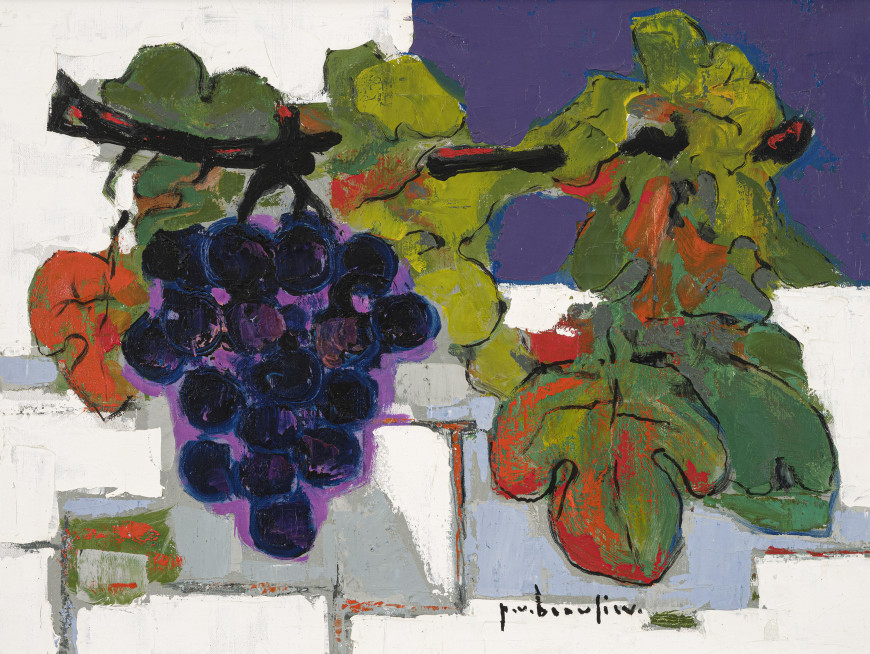-
Artworks
Paul Vanier BeaulieuNature morte raisin fond bleu, 1958 (circa)1910-1996Oil on canvas18 x 24 in
45.7 x 61 cmSoldInscriptions
signed, ‘p.v. beaulieu.’ (recto, lower right); signed and titled ‘NATURE MORTE RAISIN FOND BLEU PAR P.V. BEAULIEU’ (verso, upper left)Provenance
Galerie Saint-Charles, Saint-Remy-de-Provence, France.
Galerie Valentin, Montreal.
— Nature morte raisin fond bleu, circa 1958 is a vigorously painted and aesthetically attractive composition of the late 1950s. In this painting Beaulieu is transitioning toward the abstraction. Over a few years he achieved a number of outstanding abstract landscapes before reverting to figuration. Although we have never found evidence of a meeting between them, Beaulieu’s approach is mildly reminiscent of concepts and ideas Nicolas de Staël developed in Paris during Beaulieu’s stay.
Beaulieu is an important modern Canadian artist who spent some 30 years of his career in Paris and the balance in Quebec. Beaulieu was studying in Paris when the City fell to German forces. He interned at St Denis in the same camp as Jean Dallaire. The influence of many French Moderns including Cézanne, Derain, Braque, Rouault and de Staël can be identified in various stages of Beaulieu’s creative evolution. He excelled not only painting in oils but also a master watercolourist and an excellent print maker. Beaulieu’s ability shown in his drawings display a fluidity, confidence and tendency toward the work of Picasso and sometimes Matisse.
From 1954 and for a period of 11 years Beaulieu’s exclusive representative was Dr. Max Stern’s Dominion Gallery in Montreal. Beaulieu paintings are in numerous public collections including: Montreal Museum of Fine Arts, Montreal Museum of Contemporary Art, National Gallery of Canada, Quebec National Museum of Fine Arts, Musée national d'Art moderne de Paris (National Museum of Modern Art in Paris), London Art Museum, Winnipeg Art Gallery, Philadelphia Museum of Art.
In 2009 Galerie Walter Klinkhoff hosted a Paul Vanier Beaulieu Retrospective Exhibition accompanied by an outstanding text researched and written by the distinguished former curator Germain Lefebvre.
1of 120












